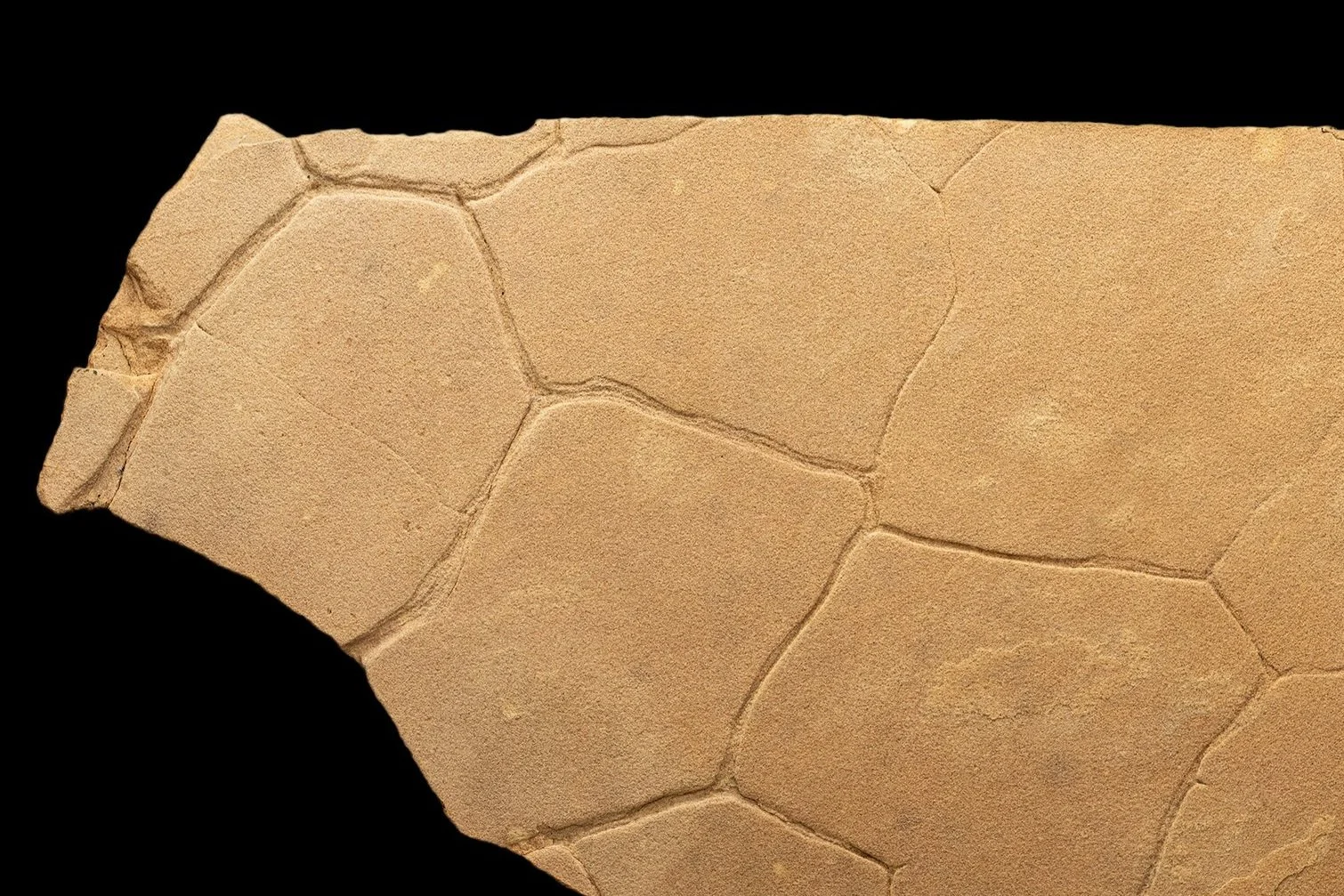
The Coconino Sandstone
What is the
Coconino Sandstone?
The Coconino Sandstone is a deposit of homogeneous, mostly quartz sand, that covers much of northern Arizona. It can be merely a meter thick at its northern edge, while thickening to over 300 meters in the south.
Isopach (thickness) map of the Coconino Sandstone of Arizona and its correlative Glorieta Sandstone in New Mexico. Image based on Blakey et al (1988).
The Coconino Sandstone is a Permian rock formation, part of the Paleozoic sequence of rocks that crops out along the southern border of the Colorado Plateau and is beautifully exposed in the Grand Canyon.
Left image: Schematic column showing geologic formations in the Grand Canyon. Permian Coconino Sandstone indicated by black arrow. Image from Billingsley et al. (2019).
Right image: The distinctive ledge formed by the light-colored Coconino Sandstone (black arrow) can be clearly seen along the rims of the Grand Canyon.
The Coconino Sandstone is typically devoid of fossils, except for vertebrate and invertebrate trackways. Because of the uniform sand composition and the ubiquitous large cross-stratification, the Coconino Sandstone is typically interpreted as being deposited in a desert environment, with vast fields of moving sand dunes. However, there is significant evidence that points to an alternative scenario of wet and underwater conditions for the formation of the dunes and trackways. The GRI Coconino Sandstone slabs present interesting details in the context of this discussion on the environment of deposition.
Thin section microphotograph of sample from Coconino Sandstone. White quartz grains are moderately well-sorted and subrounded to subangular. Blue epoxy fills intergranular spaces. Photo, taken in plane polarized light, courtesy of Dr. Sarah Maithel.
Example of cross-stratification in the Coconino Sandstone. Note erosional trucation of individual cross-sets. Camera case for scale (25cm long). Photo taken along the South Kaibab Trail, Grand Canyon National Park.
References:
Billingsley, G.H., Goodwin, G., Nagorsen, S.E., Erdman, M.E., and Sherba, J.T., 2019, Geologic field photograph map of the Grand Canyon region, 1967–2010: U.S. Geological Survey General Information Product 189, 11 p., https://doi.org/10.3133/gip189.
Blakey, R.C., Peterson, F. and Kocurek, G., 1988. Synthesis of late Paleozoic and Mesozoic eolian deposits of the Western Interior of the United States. Sedimentary Geology, 56(1-4), pp.3-125.
Coconino Sandstone Slabs at GRI
This animal made tracks akin to those of a scorpion, but with some significant differences.
What can we learn from the strange orientation of toe marks in the trackway of this slab? Was the animal walking on dry sand, or drifting under a current?
This slab is over a meter long and contains at least four quadrupedal trackways.
There are trackways on both the front and back of this 1.5 meter-long slab.
What type of process would produce these geometric depressions?
What else do we know?
“Aside from the footprints, only a few worm tubes and invertebrate tracks have been reported. What did the animals who made all these tracks feed on? They had to have some food, but it is not there. If simple footprints are well preserved, so should the imprints of leaves and stems of plants, if they were present.”
- Dr. Ariel A. Roth, “Incomplete Ecosystems”
This article by Dr. Brand presents a detailed review of the Coconino Sandstone trackways.
The Coconino Sandstone sits atop the Hermit Formation with an abrupt contact. Wedge-shaped cracks can be found in the top of the Hermit Formation, filled with Coconino Sandstone. These cracks can project downward from the Coconino into the Hermit mudstones up to 15 m deep. Though these have conventionally been interpreted as desiccation cracks, some evidence suggests they are more likely sand injectites caused by fault-controlled seismic activity (Whitmore, 2010).
Above image: Three vertical sandstone-filled cracks (several meters deep) at the contact between the Hermit Shale and Coconino Sandstone. Note sharp planar nature of the contact and large scale cross-stratification in the Coconino Sandstone. Photo taken along South Kaibab Trail, near Cedar Ridge, looking east.
Reference:
Whitmore, J.H., and Strom, R., 2010. Sand injectites at the base of the Coconino Sandstone, Grand Canyon, Arizona (USA). Sedimentary Geology, 230(1-2), pp.46-59.
Information about the processes that originated the characteristic cross-stratification of the Coconino Sandstone can be found in this paper:
Maithel, S.A., Brand, L.R. and Whitmore, J.H., 2021. Characterization of hard‐to‐differentiate dune stratification types in the Permian Coconino Sandstone (Arizona, USA). Sedimentology, 68(1), pp.238-265. https://doi.org/10.1111/sed.12774
An article by Whitmore et al. (2015) documents the occurrence of intraformational recumbent folds in the Coconino Sandstone. These structures are interpreted as being formed by strong water currents in a subaqueous setting.
Whitmore, J.H., Forsythe, G., and Garner, P.A., 2015. Intraformational Parabolic Recumbent Folds in the Coconino Sandstone (Permian) and Two Other Formations in Sedona, Arizona (USA). Answers Research Journal 8, pp. 21–40. https://answersresearchjournal.org/intraformational-parabolic-recumbent-folds/
For Kids!
Check out the first issue of the Creation Detectives comic book for a fun exploration of the phenomena behind the formation of the Coconino Sandstone.







